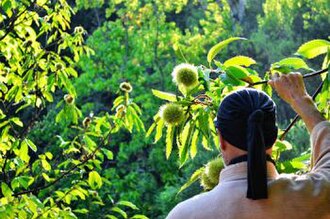
Originating in Japan, shinrin-yoku, forest bathing, is a practice or process of therapeutic relaxation, walking in the forest focusing on sensory engagement to connect with nature.
Japan, being two thirds covered in forest, is filled with greenery and a vast diversity of trees. Residing there is the Hokkaido region, Japan’s last great wilderness, and the Japanese Alps, filled with mountain ranges and thick pine forests. The term shinrin-yoku was coined in 1982 by Tomohide Akiyama, who was the director of the Japanese Ministry of Agriculture, Forestry and Fisheries. After several studies were conducted in Japan during the 1980s, forest bathing was seen to be an effective therapy method. Akiyama knew of these studies along with the findings that showed the beneficial health effects of the compounds, such as phytoncides, and of the essential oils that certain trees and plants emitted. Thus, he officially put forward shinrin-yoku as a recognized practice, promoting its benefits to the Japanese public and establishing guidelines for its implementation.
Shinrin-yoku was developed as a response to the increasing urbanization and technological advancements in Japan and was put forth to inspire the Japanese public to reconnect with nature within Japan and as a means to protect the forests. It was reasoned that if people spent time in forests and were able to find therapeutic comfort within it, they would want to protect it.
